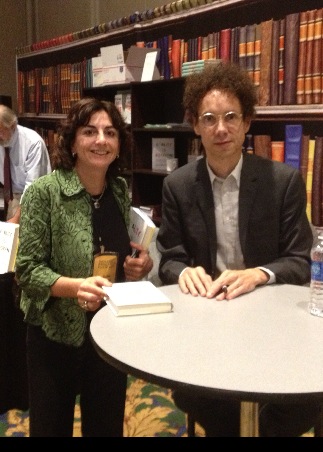 In less than 15 years, your car will drive itself, and education and learning as we now know them will be as unrecognizable as the cassette tapes of old. Look out, because nothing is safe. It will happen in healthcare, in manufacturing, in entertainment, and even in your job. Everything is becoming more focused on true value creation. If you want to be ready for what’s ahead, here are the people and companies to follow on Twitter. If you can’t already see the future, they can help you put it into focus.
In less than 15 years, your car will drive itself, and education and learning as we now know them will be as unrecognizable as the cassette tapes of old. Look out, because nothing is safe. It will happen in healthcare, in manufacturing, in entertainment, and even in your job. Everything is becoming more focused on true value creation. If you want to be ready for what’s ahead, here are the people and companies to follow on Twitter. If you can’t already see the future, they can help you put it into focus.
-
We’re heading to a “trillion sensor world”—a world filled with smart objects constantly interacting over a network to improve user experiences. For example, Peter Diamandis, co-founder of Singularity University, predicts today's 2-year-olds will probably never drive a car thanks to the dawn of self-driving cars. If you think your industry isn’t being disrupted by the Internet of Things…think again.
Twitter: @PeterDiamandis. Hashtags: Internet of Everything, Internet of Things (#IoE or #IoT)
-
Have you thought about how manufacturing can now happen in your own home? Bre Pettis of MakerBot, heads up a company that’s already bringing 3D printing to us. An awesome example? A group of 12-year-olds in a Massachusetts town made their friend a prosthetic arm on one of these 3D printers.
-
There are a billion doctors’ office visits each year, and 80% of those visits do not require physical contact. Dr. Rafael J. Grossman, surgeon and mHealth innovator, is a vanguard of this emerging medical model. Why not use FaceTime, Skype, and other online platforms that solve the need for medical consults in a less expensive and more accessible way?
-
According to Pepsi’s Chief Design Officer, Mauro Porcini, we can’t innovate in just one dimension. Today, Pepsi competes with Nike and Apple for emotional relevance. Porcini says that there are three separate dimensions of interaction. The first experience with a brand is visceral—like glimpsing a beautiful woman or man. The other two steps involve repurchase (which is an interaction that comes from your emotional love of a product or a brand) and recommending (which is the self-expression of a brand through word of mouth). You can’t create breakthrough innovation by addressing just one of these dimensions. You have to address all of them.
Twitter: @mauroporcini
-
Kids just hanging out after school are going to discover a cure for cancer, solve world hunger, and create sensors that help previously marginalized and unprofitable subgroups get what they need to live productive lives. How? Through having fun. Harvard professor Michael Tushman says corporations have culture and power systems geared perfectly to their existing strategies but that these corporations often aren’t agile enough to shift. We need to set up creative time to work on the things we want to work on. Intuit, for example, allows employees to spend 10% of their time on projects they’re interested in, and those hours often yield the innovations of tomorrow.
Twitter: @Michaeltushman
-
Those kids I mentioned above are only part of the solution. According to Kate Ertmann of Animation Dynamics, we need pan-generational partnering to pull it together. Millennials, Generation X, Gen Y, and Baby Boomers all have something valid to contribute, but each generation talks a different language and has different self-motivators (hint: money for the elders and time off for the young’uns). This means each of us needs to learn to be a teammate and learn the language of partnering.
Twitter: @GOK8
-
Carlos Dominguez, technology evangelist and SVP at CISCO, says that everything is rebooting. Business models are totally changing. Retail stores are no longer mission critical. Distance is dead and consumers are active participants. Now the crowd can conduct piecework for a common goal— the seemingly daunting 100 million hours of development time it took to create Wikipedia equates to what Americans collectively spend each weekend watching TV ads.
Twitter: @carlosdominguez
-
Mike Nelson, Principal Technology Policy Strategist at Microsoft, is a guy whose job is to avoid tomorrow’s policy fights by focusing on global internet governance. He speaks on behalf of transparency and the need to enlist “teamers” from within and beyond corporate and national walls to solve common challenges. These sought-after people will have varied skills, learn from their customers, and be led by an executive who supports, rather than manages, them.
Twitter: @mikenelson
-
Even though most things can now be found online, some things remain in the physical world. Let’s face it: we do need to leave our houses sometimes. So follow Johnny Cupcakes—this guy could sell us dirt in the form of a cupcake for $40 and what he’d really be selling us is sustainability, community, and self-love. He consistently delivers “WOW” in the form of customer experience. In a time when retail shops are largely believed to be dying, he’s patented a retail store concept of selling clothes and accessories from bakery shelves. And his fans line up outside his store for hours. Of course he doesn’t ignore online shoppers; he translates this unique experience to his online store too. His products ship in distinctive and delightful packaging. That packaging costs Johnny extra but those details…well, Johnny knows, just like when it comes to Tiffany’s, we’re buying everything the box represents.
Twitter: @johnnycupcakes
Julie is an Account Executive, she just flew in from the Future of Consumer Intelligence conference where she was in her element connecting with innovative big thinkers on topics ranging from emotion to mobile and complex choice modelling. Follow her @julie1research using hashtag #MRX.



 Last week’s
Last week’s  Julie is an Account Executive at CMB, she's definitely a "Scientist" not a "Caesar;" you can follow her on Twitter
Julie is an Account Executive at CMB, she's definitely a "Scientist" not a "Caesar;" you can follow her on Twitter 
 2.
2. TMRE is always a whirlwind of meeting new people, catching up with clients and industry colleagues, and of course getting some time to reflect on the questions and challenges facing the Market Research industry and our clients. This weekend I took some time to round up 10 of the questions we heard asked, and sometimes even answered, at this year’s conference:10. What if gaming isn’t a waste of time?
TMRE is always a whirlwind of meeting new people, catching up with clients and industry colleagues, and of course getting some time to reflect on the questions and challenges facing the Market Research industry and our clients. This weekend I took some time to round up 10 of the questions we heard asked, and sometimes even answered, at this year’s conference:10. What if gaming isn’t a waste of time?  6. Do you have a relatable mission?
6. Do you have a relatable mission?